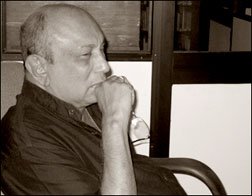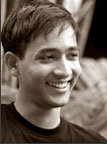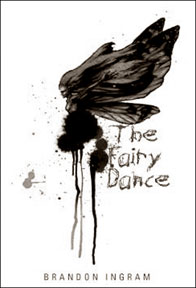
Epistemological reflections of the Buddha
A
sourcebook of Early Buddhist Philosophy
Author:- David J. Kalupahana
Published by Buddhist Cultural Centre, Nedimale
Reviewed by Padma Edirisinghe
 Randomly going through a welter of essays on our British governors
for use in a series of articles on them in a weekly newspaper, the
reviewer came across an interesting speech made by Sir Robert Chalmers,
Governor (1912 - 1916). Randomly going through a welter of essays on our British governors
for use in a series of articles on them in a weekly newspaper, the
reviewer came across an interesting speech made by Sir Robert Chalmers,
Governor (1912 - 1916).
He focuses on the fact that this island is the most suitable for the
advancement of Buddhist and Pali studies due to its long tradition of
pre-eminence in such scholarly enterprise.
A Pali and Buddhist scholar himself (even before his advent to Sri
Lanka in his role as governor), he exults before an audience comprising
mostly students of Maligakande Pirivena.
"It was here in Ceylon that just 2000 years ago Sinhala scholars
first committed to writing the text of the Canon and Commentary.... The
rocky gorge of Aluvihara was the scene of fruitful labours of seven
hundred bhikkus, labours that mark an epoch in the history of
scholarship of the world".
The governor goes on to lament that Ceylon has neglected this role of
late, and Siam (Thailand) has overtaken her and goes on to give details
of their work done in this area.
By a strange quirk of Samsara this governor who was the most
interested British governor in Buddhism and Pali studies was recalled
for having persecuted Sinhala Buddhist leaders during the 1915 Martial
Riots, a period that coincided with the Emergence of the Temperance
Movement too.
Digging into those details will take us along a side track and we
should get back to the main track aligned to the topic. That wish
articulated by Chalmers is now getting fulfilled by various institutions
that have cropped up in the island despite being besieged by many an
unfortunate drama. Among such institutions the Nedimale Buddhist
Cultural Centre sited by Anderson Road linking Nugegoda and Dehiwala
looms large.
Its indefatigable director, Ven. Vimalajothi thera who hails from the
picturesque seaside village of Kirama of the deep South today runs what
can almost be called the largest repository of books on Theravada
Buddhism.
The Centre acts as an agent of publications too among which we today
focus attention on "A sourcebook of early Buddhist philosophy" by David
J. Kalupahana, an eminent scholar working on the staff of the University
of Hawaii.
It is a voluminous text of 583 pages (bound in hard cover) and
dedicated to our Hon. Speaker, Mr. W.J.M. Lokubandara for the interest
he has exhibited in its production. The author in his preface states
that the idea of compiling a sourcebook on Buddhist philosophy occurred
to him after joining the aforesaid University in 1972. But this is
certainly not his maiden work on Buddhism.
Inspired and propelled by material collected earlier of his works as
"A history of Buddhist philosophy", "Continuities and discontinuities",
"Buddha's philosophy of language" he had gone ahead with the new text
despite many setbacks. A major loss had been the death of professor
Charles Moore, the co-author of "A source Book on Indian philosophy" who
had encouraged him in the venture.
The author had then gone on to consult Miss. Horner then President of
the Pali Society of London about the possibility of utilizing
translations of the Society and that led to the birth of the first part
of the source book.
However later Sanskrit works as Nagarjuna's Mulamadhyamaka - Karika,
Maitrya's Madhyantavibhaga and Vasubandhu's Vijnapatimatratasiddhi too
have been utilized. The vast labour that has gone as background work for
this gigantic enterprise thus transpires.
Going on to the content of this text, four of the longest discourses
are here included ie. Brahmajala, Sammannaphala, Maha-Saccaka and
Ariyapariyesana. They contain very important material relating to
Buddha's epistemological and oral reflections along with the historical
background leading to such reflections.
Brahmajala Sutta can be understood more by the general reader once
the term, Discourse on Brahma's Net is used. It revolves around the
criticism of the Buddha by a Brahmin named Suppiya and praise by
Brahmadatta an Buddha's replies to the criticisms and reaction to
praise. But this is simplifying facts too far. One not only gets and
insight into Buddha's moral philosophy but it affords a re-examination
of the entire Indian philosophical tradition in this Sutta.
The next Sutta, Sammannaphala sutta places Buddha's epistemological
reflections in the background of the teachings of six members who
belonged to the non-Brahmanical reclusive tradition. This discourse is
said to be one of the earliest to reveal these teachings which include
those of the skeptic Sanjaya and Jaina Mahavira.
Next comes the Maha Saccaka Sutta that reveals the extreme form of
ascetism tantamount to self-mortification followed by some Indian
ascetics. Buddha too before His enlightenment experiments with some of
these, only to give them up.
The Ariyapariyesana Sutta or the Discourse on the Noble Quest that
comes last is the most significant where Buddha explains the purpose of
His renunciation and goes on to outline His own discovery.
The diverse aspects concentrated on in the presentation of these can
be gauged by the titles of the chapters ie. Background (8-110),
Knowledge (111-180), Metaphysics (181-251), Karma and morals (252-335),
Society and politics (336-385), language and freedom (386-430). These
are followed by Translation of technical terms, select bibliography,
Index of discourses and Index (559-575).
The discourses are listed in the order presented in the text. The
English translation is followed by its Pali form that is presented in
parenthesis along with specific reference in the Pali Nikayas.
The language used is lucid and clear while the content in many
instances remains abstruse in keeping with the metaphysical teachings of
Buddha.
Anyway the book is a MUST for every student of Buddhism and all those
interested in this great faith. It should adorn the shelves of all major
libraries.
Rendezvous
He sliced out a piece of himself and slapped it down on the desk in
front of me...:
by Aditha Dissanayake
There is very little space between the two walls and the heavy fibre
glass door. He holds the door open with one hand while clutching a pile
of books with the other and says "Creep under my arm while I keep it
open".
|

Dr. Tissa Abeysekera |
I do just that, barely brushing against him as I step into an office
room at the International Centre for Ethnic Studies at four in the
evening on a Monday, not so long ago. We are assured we would be left in
peace for at least one hour. This is the closest I get to Dr. Tissa
Abeysekera, visibly...but spiritually...that's a different story
altogether.
As we face each other across a desk on which I place his latest book
"Roots, Reflections and Reminiscences, Dr. Abeysekara gives me his
trademark smile - bound to generate an equally wide grin from whoever
happens to be its recipient ahm... depending on the situation. I dare
not smile back.
The situation is too serious. I must get him to talk about things he
has not already revealed in "Roots, Reflections and Reminiscences".
The past. Could he elaborate on the "split-social background" of his
childhood. "I was born into an affluent family and taught to read and
write in English" begins Dr. Abeysekara.
English was spoken predominantly at home, and in his early childhood
he grew up among the kind of people who dressed for dinner, and were
filled with a lot of etiquette. His father had wanted to turn him into a
pukka sahib , when, in an almost Charles Dickensian like twist of fate,
his life changes from one of "cocooned comfort" to a "world of
deprivation".
"The servants went, the cars went, the house became smaller" and as
it got smaller his world grew bigger. But, he found himself an outsider
in this "bigger" world where speaking in English was an embarrassment.
This was a world where you drank tea by pouring it onto a saucer,
where you walked around barefooted and where everyone spoke in 100 per
cent Sinhala. He had to "disown the English language. Keep it under
wraps , sometimes even mispronouncing English words in order to survive.
"I became a schizophrenic by the age of ten".
When he was eleven he was sent to the Windsor College, his first
school, where he was made to sit with the girls because the teachers
felt, as he was only eleven years old, the girls were safe around him.
By the time he reached thirteen he could gain admittance to a proper
school and having missed being in the primary classes, had found himself
a stranger once more in another strange world. Wanting to prove to
himself and the class bullies that he "could do it" he had passed his
GSC exams with flying colours.
Then, failed the University entrance exam "gloriously". By this time
he had lost total interest in text books and begun to make excursions
into taboo land; begun to read Kafka and do everything a boy of his age
was not supposed to do. He pauses and grins at me.
It's up to me and you to guess what he means by this last statement.
He had sat for the exam a second time and this time too, "failed
wilfully". "I am a high-school drop out"! He says with a tinge of
justifiable pride in his voice.
Having dropped everything and run away to Kandy, breaking his
father's heart and making his mother wait for him to come home, he
believes it was Dr. Lester James Peiris who finally brought him back
into focus. "Almost exactly on the day I met him my vagrant life came to
a stop".
He was twenty years old and still lived with his parents in a two
bedroom house in Egodawatte. "Even though my parents gave me food and
lodging I was not a burden on them. I earned the money for the things I
needed".
He remembers how he read late into the night, in his little room at
Egodawatte, and how he had made friends with other vagrants like G.W
Surendra and Sugathapala de Silva, whom he calls "vagrants of a higher
level".
Together they had got drunk, watched films, talked and argued till
dawn, and shifted "gears to a higher level". This had been a wonderful
time to be alive with "no war", the issues of ethnicity unknown, you
could roam the streets at any time of the night with no hindrance.
Today, looking back, Dr. Abeysekara says "the narrative of my life is
clear to me now". Having braced many a stormy sea, he has finally
reached calm waters.
Our time together is up. He must leave now to conduct a lecture on
Ingmar Bergman. His final words make me wish I had another hour with
him, or two or three or till eternity. He says "Even when I write in
English I write like a Sinhalese".
Could he elaborate please? But he is gone before I can phrase the
question. Perhaps there should be a sequel to this interview, but then
again, sequels are never equals. So, like Viragaya, let this rendezvous
with one of the most eminent self-taught scholars of our time, stand
alone because anybody searching for the answer will find it in "Roots,
Reflections and Reminiscences" especially if they read the final
paragraph on page 67.
Here it is. He sliced out a piece of himself and slapped it down on
the desk in front of me. I tried to put it on paper, tried to describe
it in a way that you would see and touch and feel I hope I have
succeeded.
[email protected]
Men do not shape destiny"
 When Fidel Castro said "Men do not shape destiny. Destiny produces
the man for the hour" he might well have been talking about himself. When Fidel Castro said "Men do not shape destiny. Destiny produces
the man for the hour" he might well have been talking about himself.
The fact becomes evident to anyone going though the pages of
Jayatilleke de Silva's biography of the leader who has ruled Cuba for
over forty years and who remains one of the world's most complex rulers.
The book describes Castro's life and career including his childhood,
family, education and political endeavours. The opening pages provide an
intriguing account of his early years where he spent his time playing
with Haitian children.
His father Angel Castro, worked as a day labourer on a sugar
plantation, but later became a property owner and a successful planter,
who despite his wealth remained frugal. Castro's leadership of the
revolution in 1959 leads him to political power.
Though critics have predicted his fall for decades he has remained
the uncontested leader, outlasting no fewer than nine American
presidents all of whom had tried to get rid of him.
Written in an engagingly simple style the slim volume includes photos
of Castro during different stages of his life. Ideal for student
research assignments, Senpathi Fidel is bound to fill the gap in
reference collections for well written biographies that serve both as
enjoyable reading and as authoritative research tools.
Aditha
Opening closed doors
Brandon Ingram exposes the horrors of child
prostitution through The Fairy Dance:
by Mahesh Perera
|

Brandon
|
 A sensitive issue often swept under the carpet is the theme of young
twenty two year old Brandon Ingram's debut novel titled The Fairy Dance. A sensitive issue often swept under the carpet is the theme of young
twenty two year old Brandon Ingram's debut novel titled The Fairy Dance.
The book launched last Friday at the Barefoot Gallery is the story of
two children, a boy and a girl caught in the midst of the harsh, cruel
game of survival, in which their parents sell them to the highest
bidder.
Trapped and with no escape from the ugly claws of child prostitution
they could only cry to the heavens for help. Brandon Ingram explores the
lives of the children with the objective of exposing a shocking reality
that is often conveniently forgotten. Through a story based on real
facts the writer courageously opens doors that normally would have been
shut in society.
A well-known singer, actor, poet and creative writer working in an
advertising agency, Ingram informs us that he started on his novel last
year after having gathered extensive information on the subject whilst
working on a social responsibility campaign on child sex tourism in
2005.
"The problem is concentrated in the coastal area and 80 per cent of
the boys are affected. It's a vicious cycle of how children get
involved. I haven't sugar coated my style of writing.
It's raw and real and I hope it reaches out to parents who need a
jolt into knowing the sad truth of the fates of these children who are
deprived of a normal happy life," comments Brandon Ingram. The book
containing 200 pages has been published by the Perera Hussein Publishing
House. |
